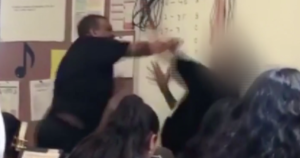Concussion Procedures
November 4, 2022
A concussion is a mild form of traumatic brain injury caused by a hit or jolt to the head or caused by an injury that causes the head to move rapidly back and forth.
A concussion changes the way the brain normally works. It is an injury that cannot be seen by the eye or by diagnostic imaging, according to nurse Donna Davis. Anytime a student at Timberland hits their head and doesn’t feel right, they should tell their coach or the athletic trainer if it happens during a practice or game, according to Davis. This is what football player, junior Corey Fumigalli, did.
“At the moment I feel alright and I feel like I’m nearing the end of my concussion,” Fumigalli said.
After a concussion, most students are still able to come to school but they may need to decrease their physical activity or reduce their cognitive workload in the classroom to allow the brain to rest and recover. Once a person is diagnosed with a concussion, they will want to avoid or limit activities that cause their symptoms to worsen or reappear according to Davis.
“I’ve been mainly sleeping and just making sure it’s dark, because concussions hurt the whole time,” Fumigalli said.
If looking at a computer or phone screen is an issue, darkening the screen or limiting the screen time may be beneficial.
“Bright light was the worst; it made me feel like throwing up,” said junior Seth Rightnower.
The procedures when the injury takes place are as follows, see if there is major damage to the head or point of injury, if the student is in a sport they must pass an impact test to return to said sport. Some symptoms of concussions are appearing dazed or stunned, confusion about events, answering questions slowly, repeating questions, an inability to recall events prior to and/or after the injury, losing consciousness and showing behavior or personality changes.
To help prevent concussions in school, having an environment that is a safe, healthy place for students and staff is key. For instance, keeping frequently traveled areas such as stairs and hallways free of clutter. For more information contact Davis or the athletic trainer.



